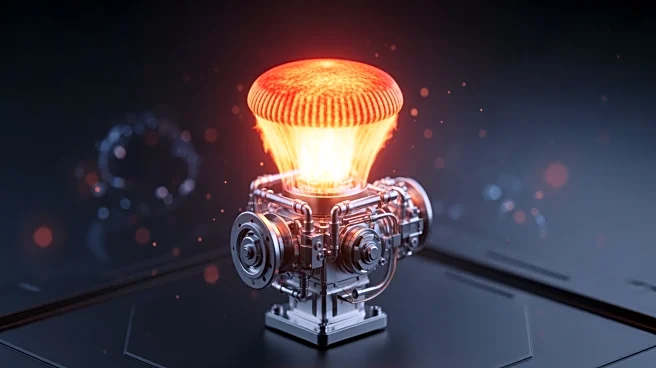What's Happening?
A team of physicists from Aachen, Düsseldorf, Mainz, and Wayne State University has discovered a new type of crystal made of rotating particles. These crystals exhibit unusual behaviors such as splitting
into fragments, forming unique grain boundaries, and displaying controllable structural defects. The study, published in the Proceedings of the National Academy of Sciences, introduces a theoretical framework to predict the properties of these 'transverse interaction' systems. The research highlights the potential for these crystals to exhibit 'odd elasticity,' where materials twist instead of stretch when pulled. The study also explores the potential technological applications of these crystals, such as new technical switching elements.
Why It's Important?
The discovery of these rotating crystals could have significant implications for materials science and engineering. The unique properties of these crystals, such as odd elasticity, could lead to the development of new materials with applications in various industries. The ability to control the formation of defects in these crystals could also lead to advancements in manufacturing processes. Furthermore, the study provides insights into the fundamental behaviors of materials, potentially leading to new theories and applications in physics and engineering.
What's Next?
Researchers are likely to explore the practical applications of these rotating crystals in various fields. The study's findings could lead to further research into the development of new materials with unique properties. Additionally, the theoretical framework introduced in the study may be used to explore other systems with transverse interactions, potentially leading to new discoveries in materials science.












